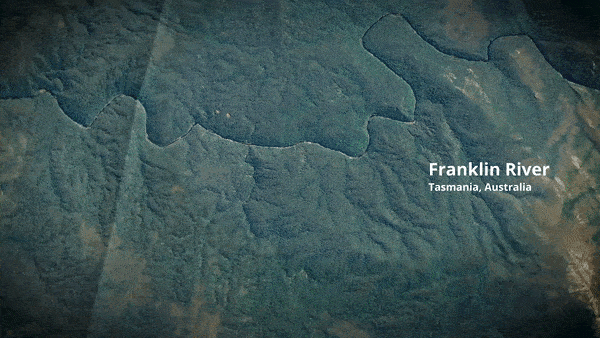Wilderness Journal Issue #020
With an introduction by Bob Brown, a special edition of Wilderness Journal celebrating the Franklin campaign and the beginnings of the Wilderness Society.
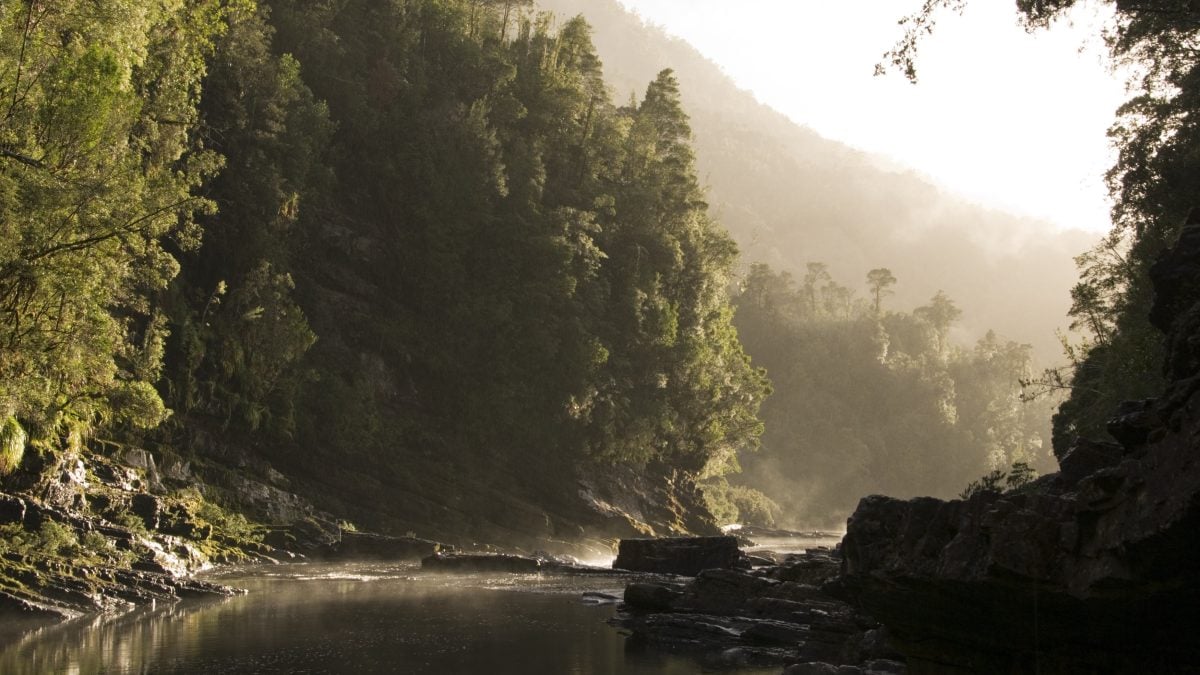
1 July 2023 marks 40 years since the High Court decision in favour of saving the Franklin
Years of dedicated activism and peaceful protest culminated in victory for the Blockaders, when on 1 July 1983, the High Court ruled in favour of the federal government, protecting the Franklin River.
The formation of the Tasmanian Wilderness Society in 1976, the World Heritage listing of the South West of Lutruwita / Tasmania in 1982, and the thousands of people taking to the streets and the Franklin Blockade; all were part of a chain of events that led to the High Court decision to protect the Franklin and its World Heritage values in 1983.
The campaign was an historic win for nature and the power of people to affect change.
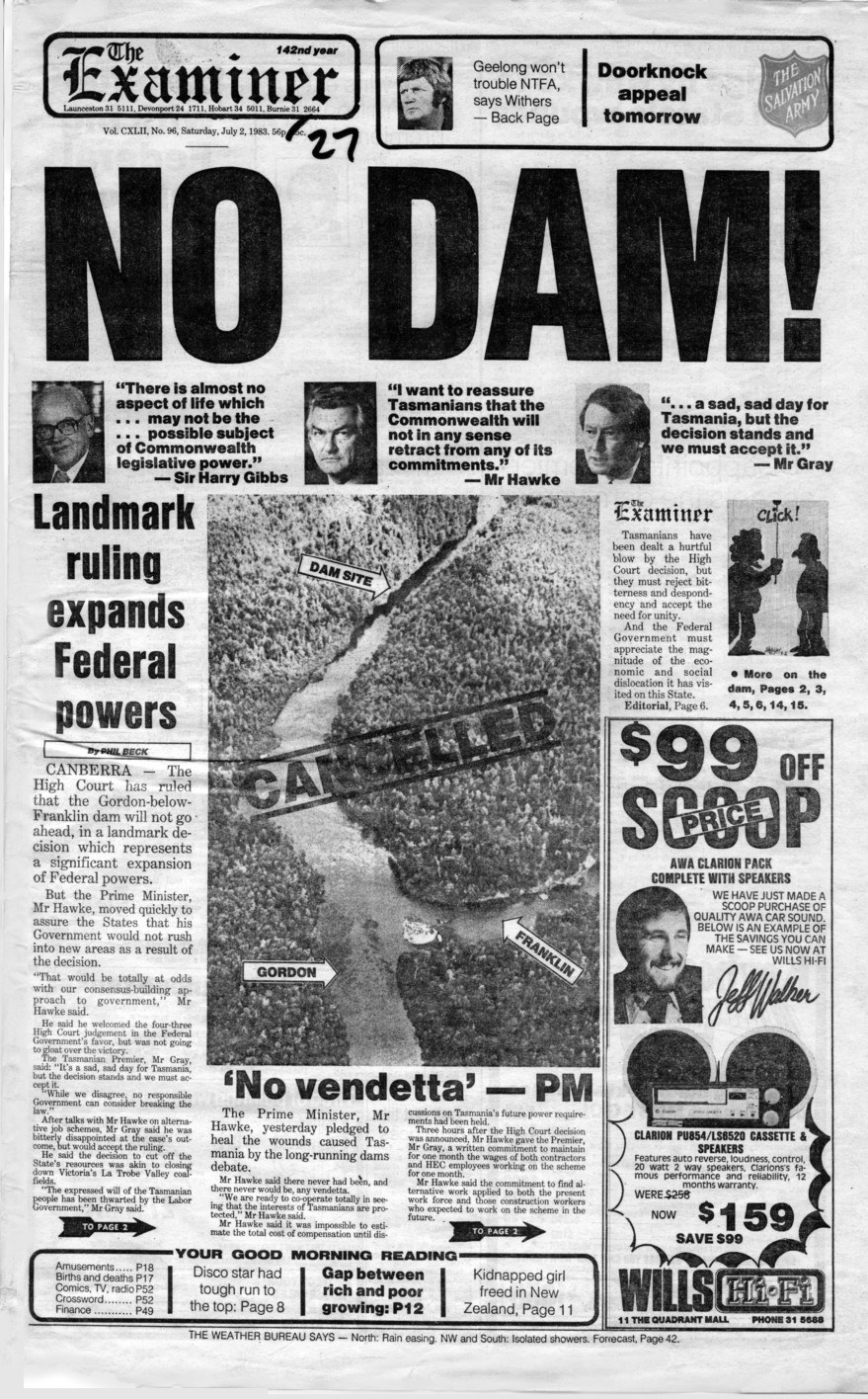
On 2 July Tasmania's The Examiner newspaper carried the news of the High Court ruling on its front page. It was the seismic outcome of a long campaign by environmental activists, led by Bob Brown and the Tasmanian Wilderness Society. The decision was a watershed moment for Australia's environmental movement. (Main image top: The Franklin River in the Tasmanian Wilderness World Heritage Area, by Grant Dixon.)
"Back in 1982... The pre-Hawke federal government refused to intervene and TWS’s first appeal to the High Court failed to even get a hearing. But, we decided, while the river remained flowing free to the sea our campaign would flow and grow with it. And look what happened!" —Bob Brown, quote from Wilderness Journal, Issue #020
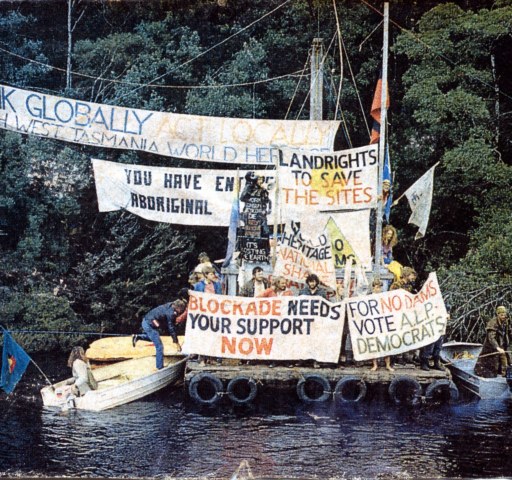
With an introduction by Bob Brown, a special edition of Wilderness Journal celebrating the Franklin campaign and the beginnings of the Wilderness Society.
A timeline of some of the key events leading to the High Court decision:
June 1976: The Tasmanian Wilderness Society is formed at a meeting of just 16 people in the home of Tasmanian GP, Dr Bob Brown. The passionate campaign that emerged to save the Franklin River rocked the political orthodoxy and defined a generation.
1978: The Tasmanian Hydro Electric Commission (HEC) reveal plans to dam the Franklin for hydroelectricity.
June 1980: Some 10,000 No Dams protestors march through Hobart.
1981: Kutikina Cave on the Lower Franklin is revealed to contain thousands of First Nations artifacts, including stone tools, marsupial bones and charcoal deposits. It becomes one of the most significant archaeological sites in Australia. It would prove pivotal in having the region declared World Heritage.
12 December 1981: At the 1981 Tasmanian Power Referendum 47 per cent of the electorate voted in favour of the Gordon-below-Franklin dam. However there was also an extraordinary 45% informal vote whereby thousands had scrawled "No Dams" on their ballot papers. It was an unprecedented campaign strategy led by Bob Brown and the Tasmanian Wilderness Society.
14 December 1982: The Franklin and Gordon rivers are listed as World Heritage at a meeting of UNESCO in Paris. On the same day the Franklin Blockade begins at the dam site at Warners Landing on the Gordon River. Dozens of arrests take place. A separate but concurrent vigil was organised by the Tasmanian Aboriginal Centre (TAC) at Kutikina Cave, next to the Franklin. The vigil led to several arrests, including that of TAC spokesperson Michael Mansell.
2 March 1983; Morning Mist, Rock Island Bend, Franklin River by photographer Peter Dombrovskis accompanied by the caption “Could you vote for a party that would destroy this?” is printed two days prior to the federal election, in major publications across Australia. This spectacular photograph capturing the morning mist in the Franklin River became one of the most enduring images of the campaign.
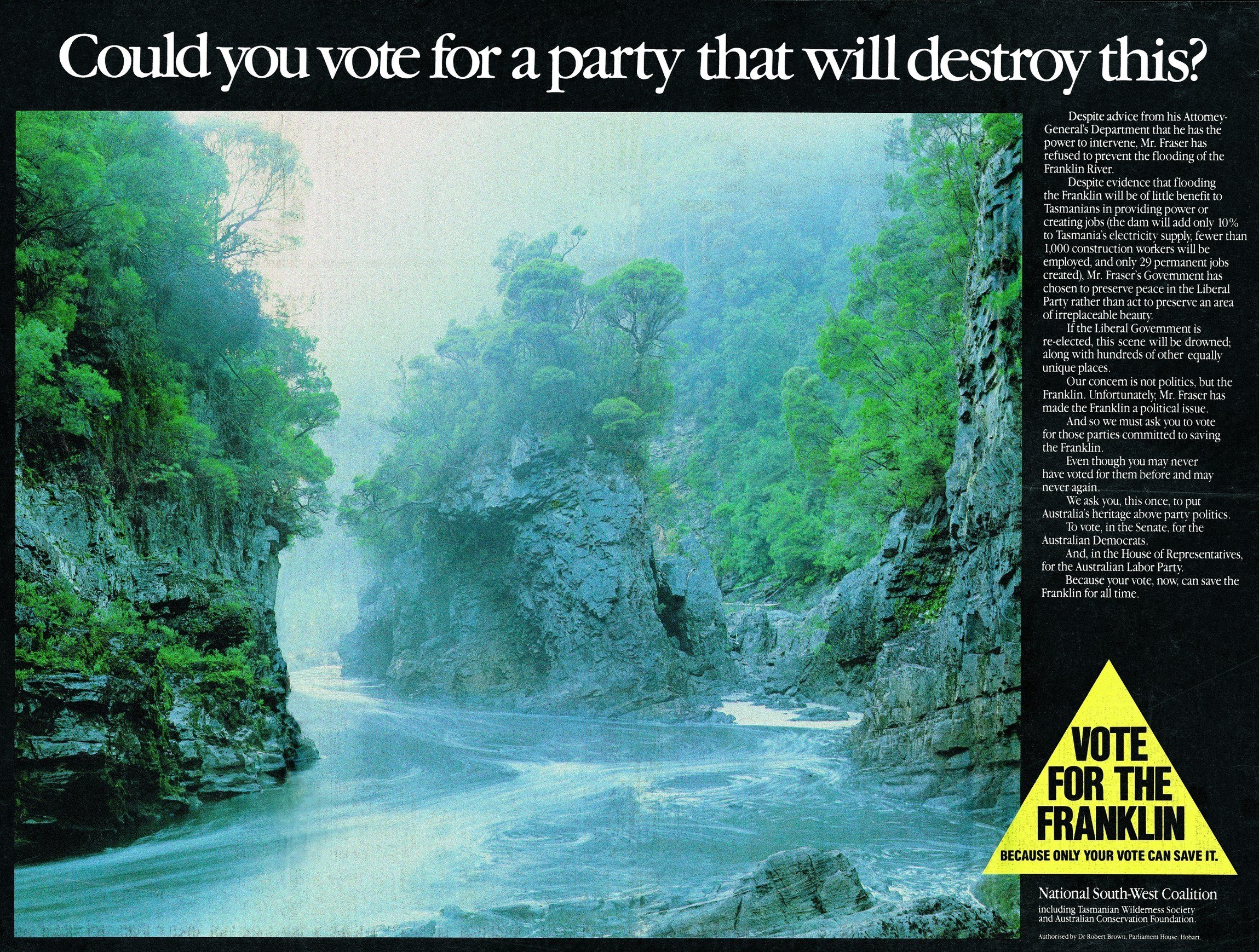
5 March 1983: Bob Hawke and the Australian Labor Party wins the federal election. In his first interview after being elected Hawke declares, "The dam will not be built." Hawke uses the World Heritage Properties Conservation Act 1983 to prohibit Franklin River dam-related clearing, excavation and building. However, the Tasmanian government ignores the legislation and continues to work on the dam.
"The dam will not be built."—Bob Hawke, newly elected Prime Minister in March 1983.
31 May 1983: With a constitutional impasse of the Tasmanian state's rights versus the federal government's international obligations, the issue is brought before the High Court.
1 July 1983: In a landmark decision, the High Court rules in the federal government’s favour by a vote of four votes to three. The ruling means the government had the legal power to implement the provisions of the World Heritage Convention.
The Franklin is saved!
"Whenever I find the prospects daunting, I turn my mind to the dark days of the Franklin campaign and get great pleasure from remembering how we opted for action over despair."—Bob Brown, co-founder, The Wilderness Society, quote from Wilderness Journal, Issue #020
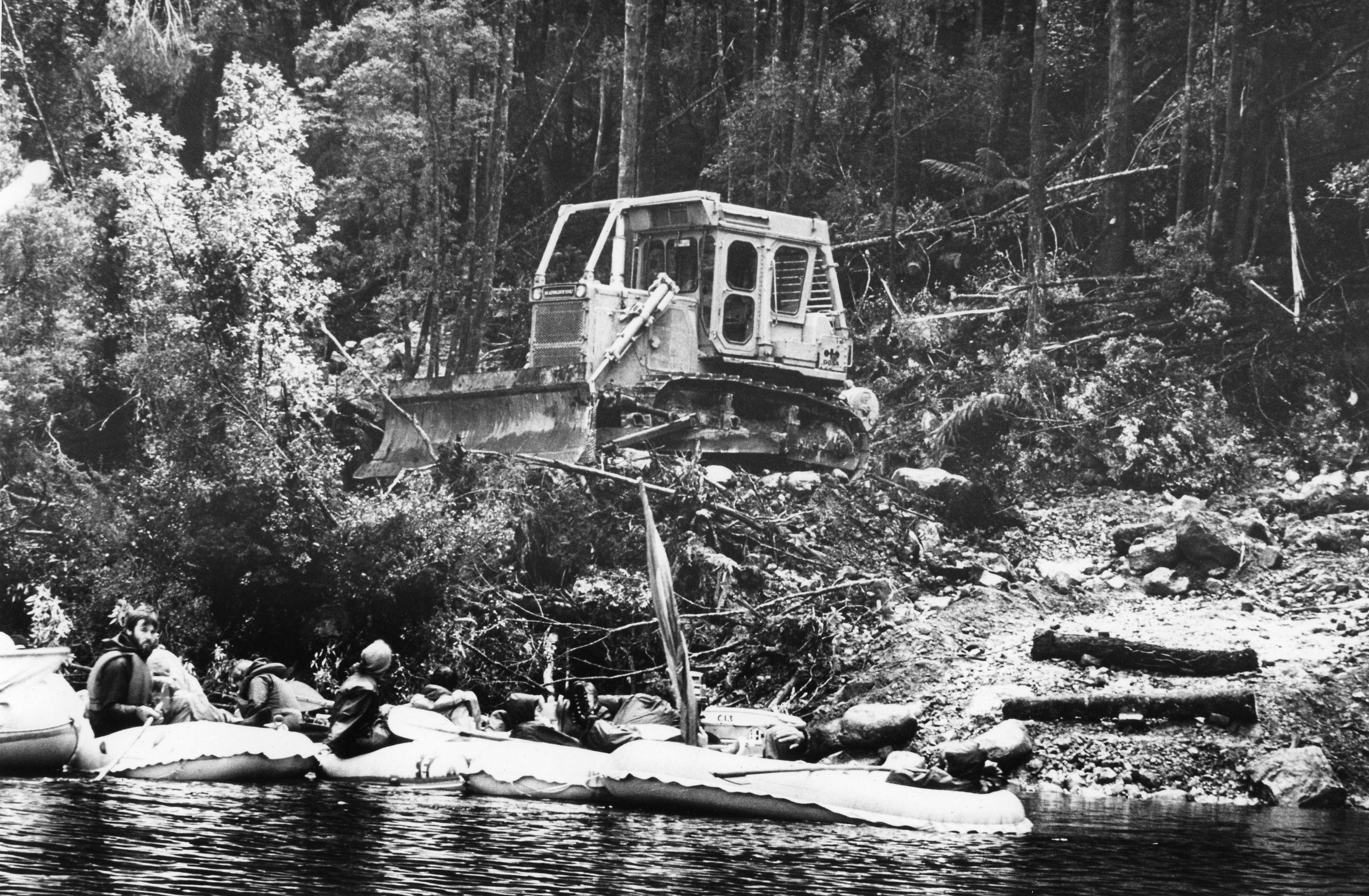
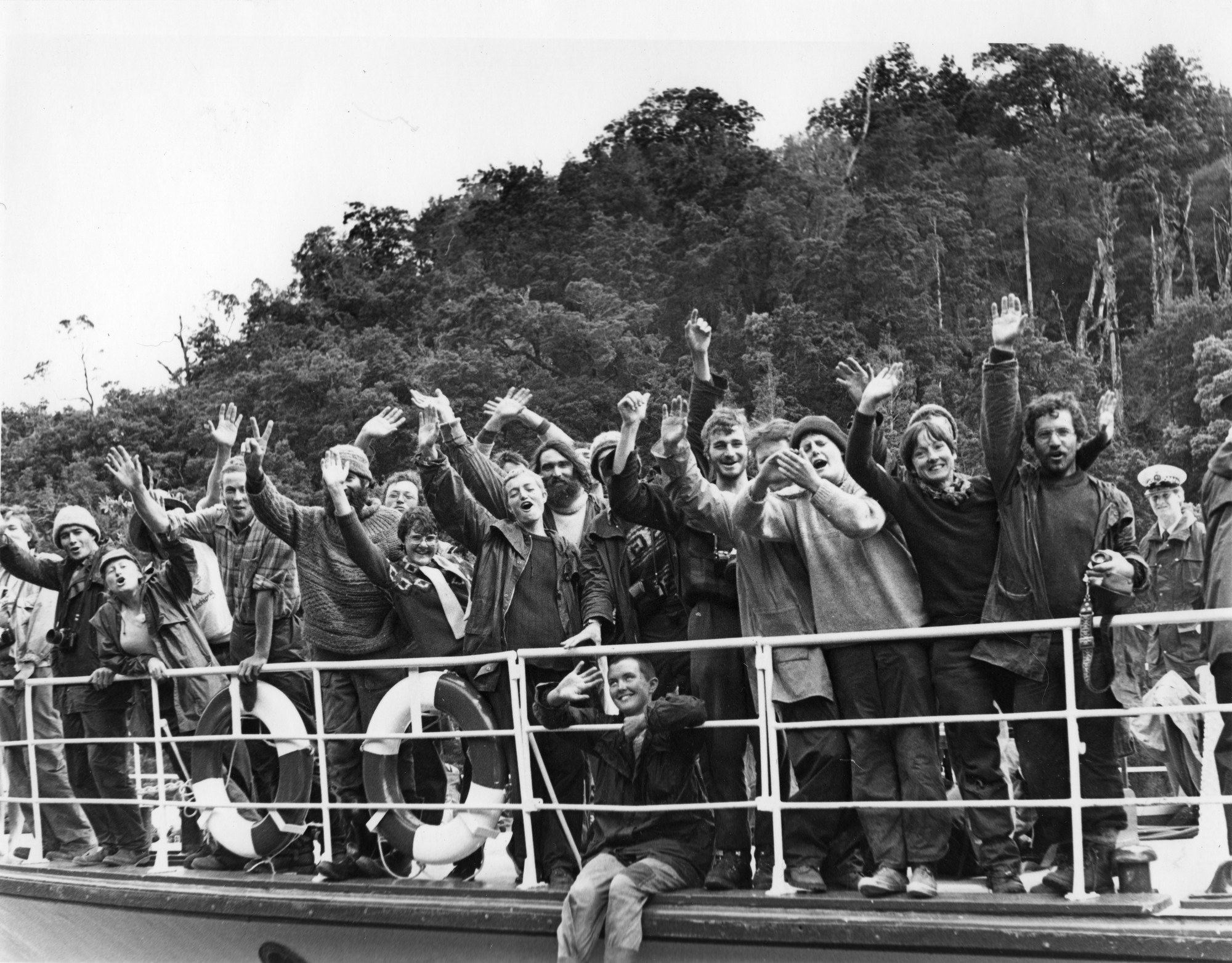
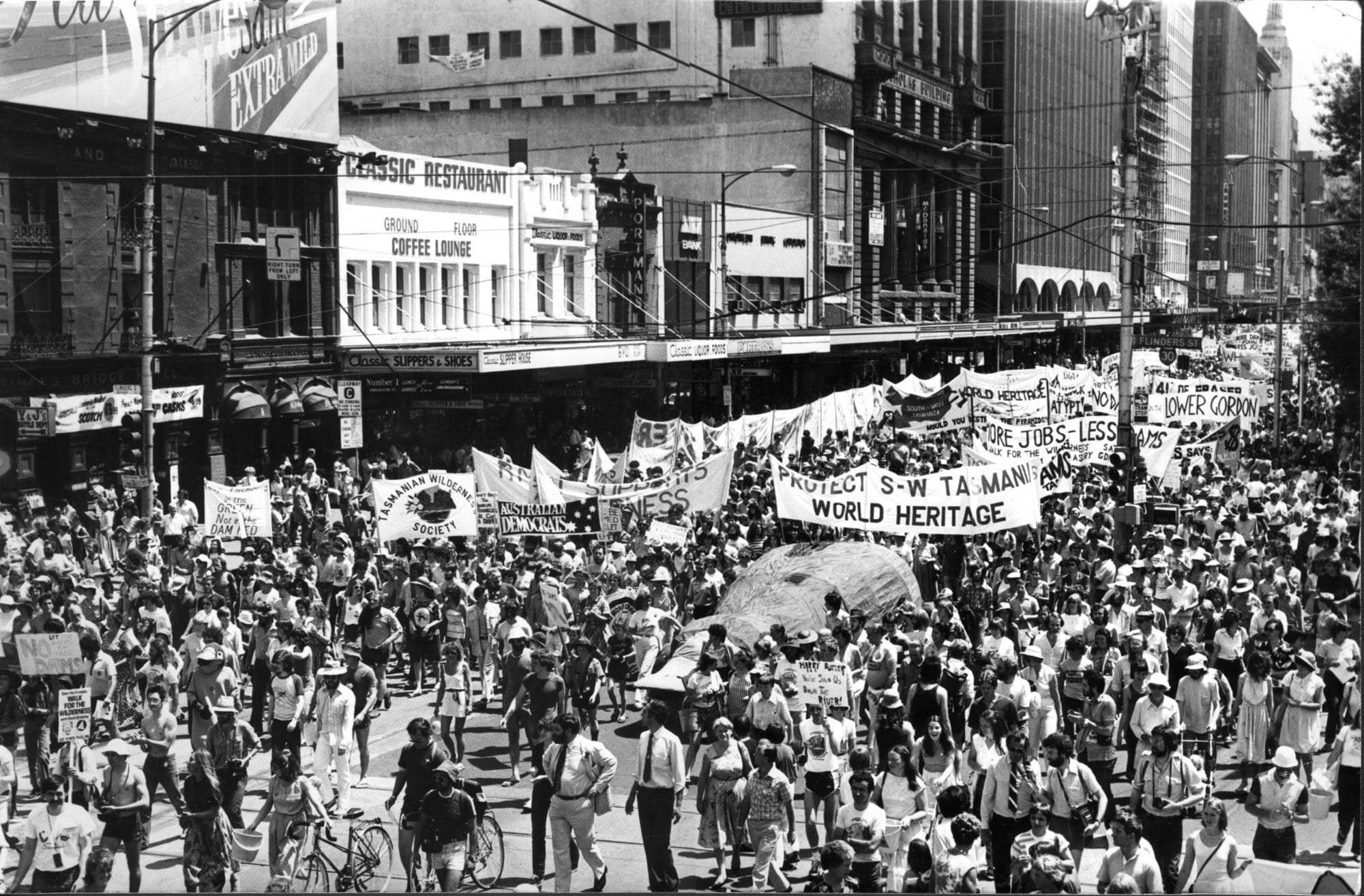

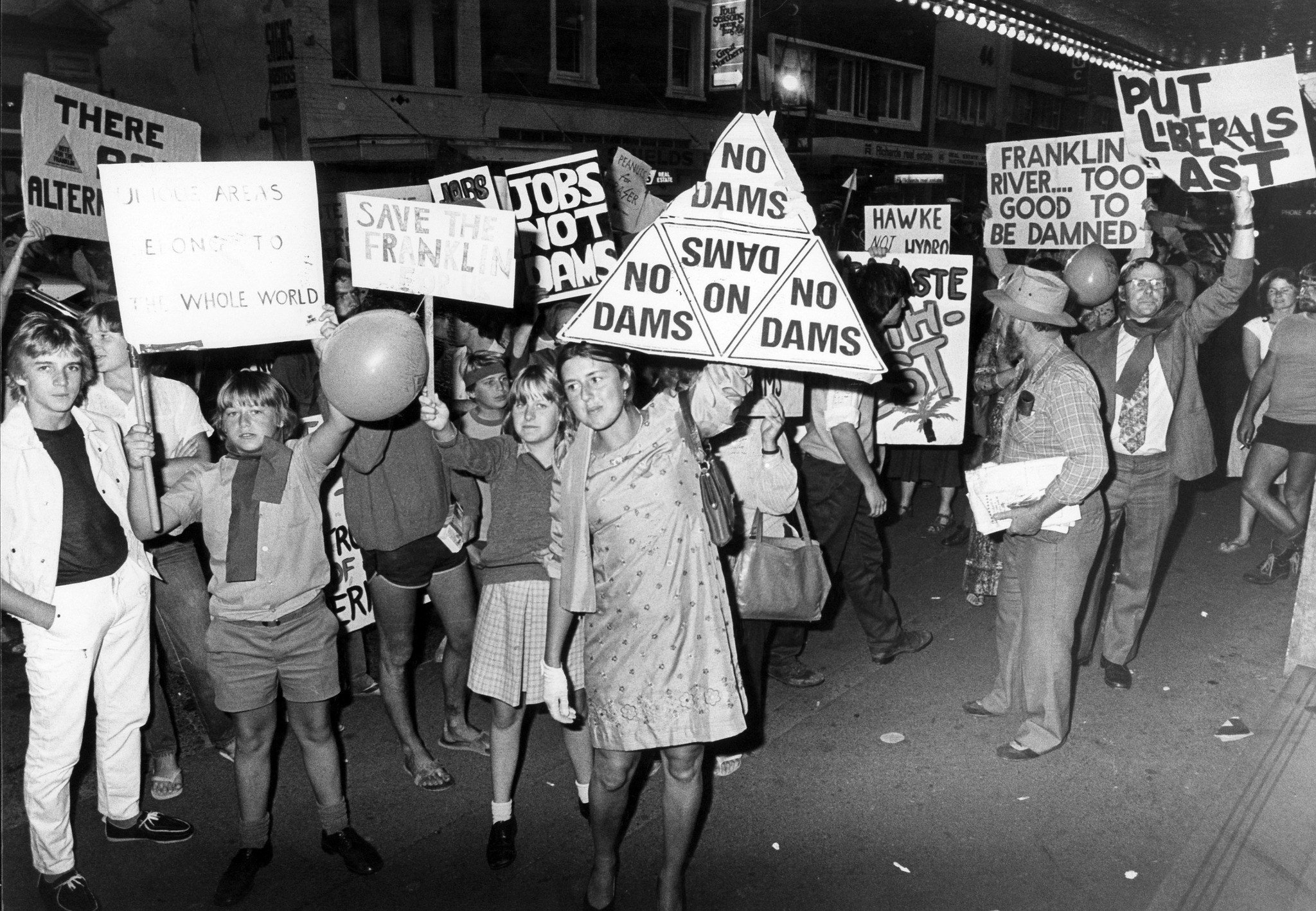
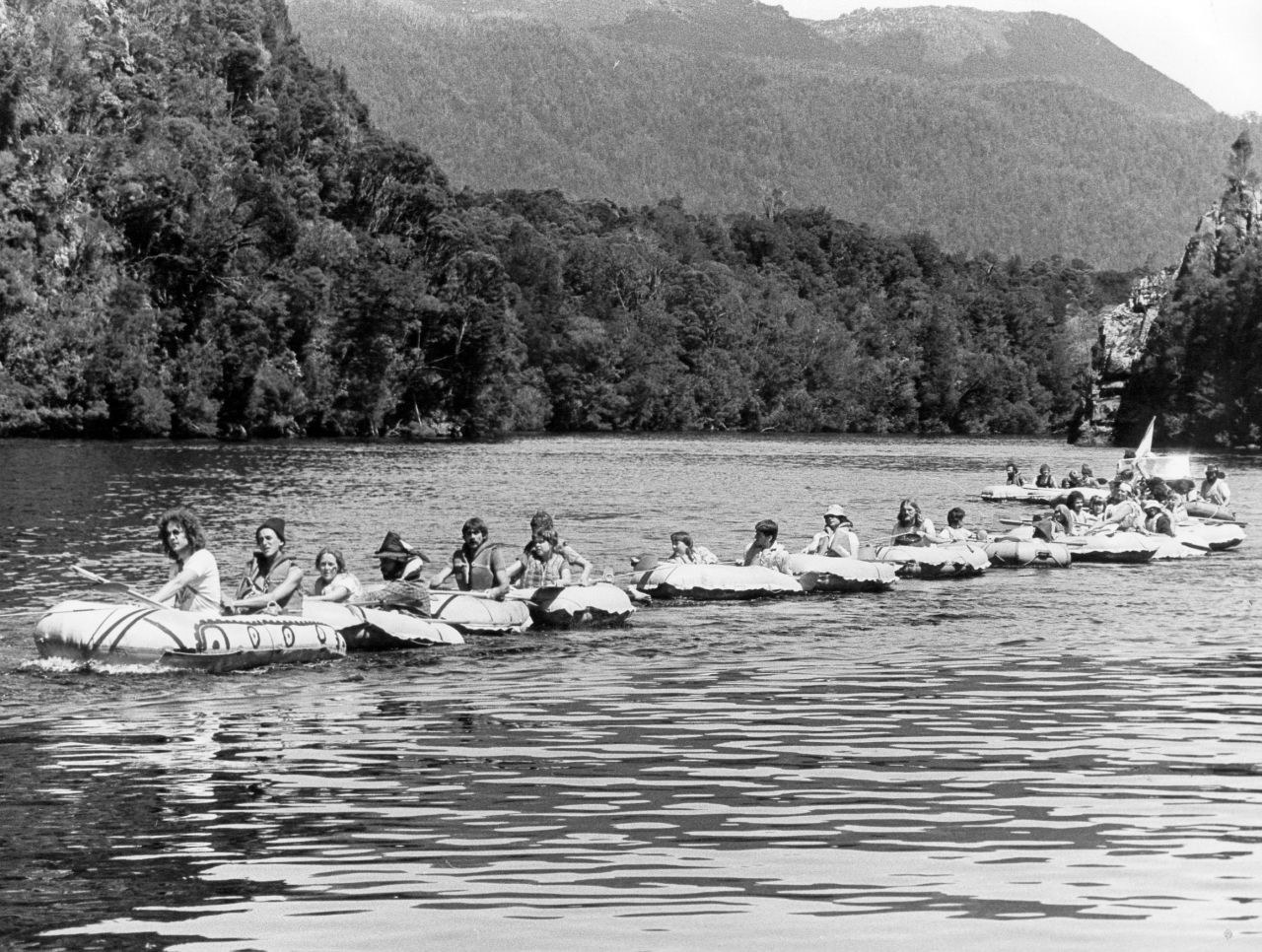
A bulldozer carves out forest on the banks of the Franklin.
Franklin Blockaders. The Blockade began when UNESCO declared the area World Heritage on 14 December 1982. Dozens were arrested.
Thousands of people at a rally to save the Franklin in Melbourne.
Creative signage at a rally.
The No Dams sign that became a national icon.
A rubber dinghy wall across the Franklin.
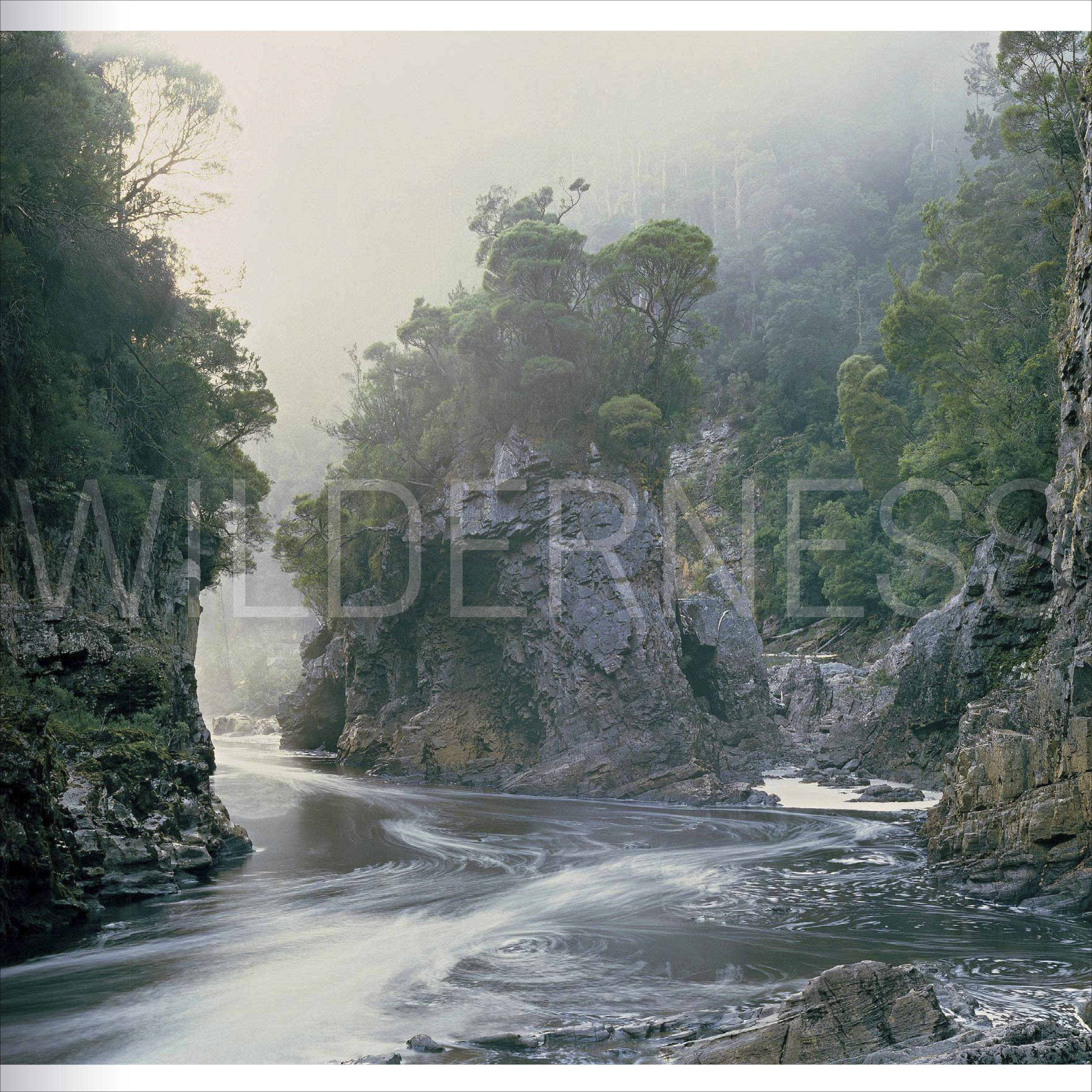
"Lake Pedder was destroyed for spurious vested interests and I was angry. And determined to fight for the Franklin. In Melbourne, liaising with TWS branches springing up around the country, we met, first 10, 50, then, by mid-1980, 1200 people. We won the Franklin on the shoulders of Pedder people. Today two weeks of solar panel installations in Australia equals the power that would have come from the Franklin. Time to restore Restore Pedder."
"40 years ago, in the week leading up to the July 1st High Court decision on the Franklin dam, Tasmania was in the grip of an immense snowstorm. Much of the state was cloaked in deep snow. There was snow in the rainforest of the Gordon River itself. On the morning of July 1st, from the rainy street outside The Wilderness Society, the clouds momentarily parted and kunanyi / Mt Wellington came into view. The magnificent mountain towered above the city - a shining omen for the High Court decision."
"1 July 1983 – a memory etched in my mind!
"It was hard to focus on my work at Westmead Hospital, knowing that this was the day for the High Court decision. My boss came in & asked if I’d heard the news… I was almost overwhelmed with a mix of elation, relief and a sudden exhaustion.
"Active members of SW Tasmania Committee (later The Wilderness Society Sydney) from 1977 onwards, both my husband Geoff and I were involved in lots of the background research and planning for the Blockade and I was, at one time, convenor of the Sydney branch. I took all the leave I could from work to help with preparing others in Sydney to go to the Blockade and to provide supporting donations, but I didn’t participate.
"I am of a view that the Franklin campaign was, and still is, the greatest example of the bringing together of all the strands needed to win a major campaign – something that is all-the-more significant in these times of heavy-handed government responses to non-violent direct action."
The United Nations World Heritage Committee decided to inscribe the Tasmanian Wilderness World Heritage Area (TWWHA) for its unique cultural and natural values. The decision would create one of the largest conservation areas in Australia and prove to be decisive in the campaign to stop the Franklin Dam.
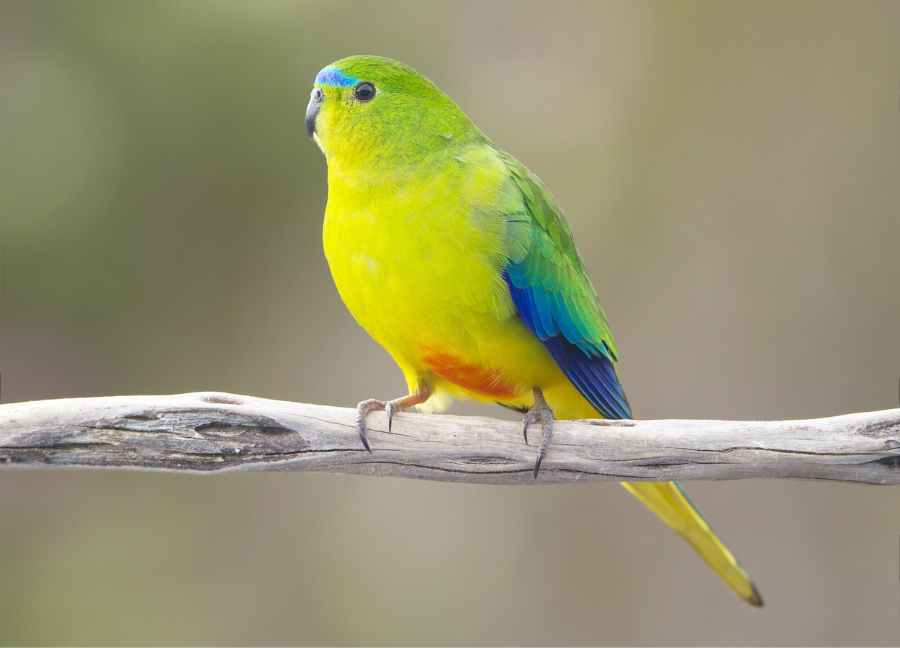
At the 6th session of the World Heritage Committee, held from 13 to 17 December 1982, UNESCO declared:
The Committee is seriously concerned at the likely effect of dam construction in the area on those natural and cultural characteristics which make the property of outstanding universal value. In particular, it considers that flooding of parts of the river valleys would destroy a number of cultural and natural features of great significance, as identified in the ICOMOS and IUCN reports. The Committee therefore recommends that the Australian authorities take all possible measures to protect the integrity of the property. The Committee suggests that the Australian authorities should ask the Committee to place the property on the List of World Heritage in Danger until the question of dam construction is resolved.
Covering over 1 million hectares, or almost 20% of lutruwita / Tasmania, the Tasmania Wilderness World Heritage Area is a world-class expanse of Gondwanan forest, temperate wilderness, mountains and rivers.
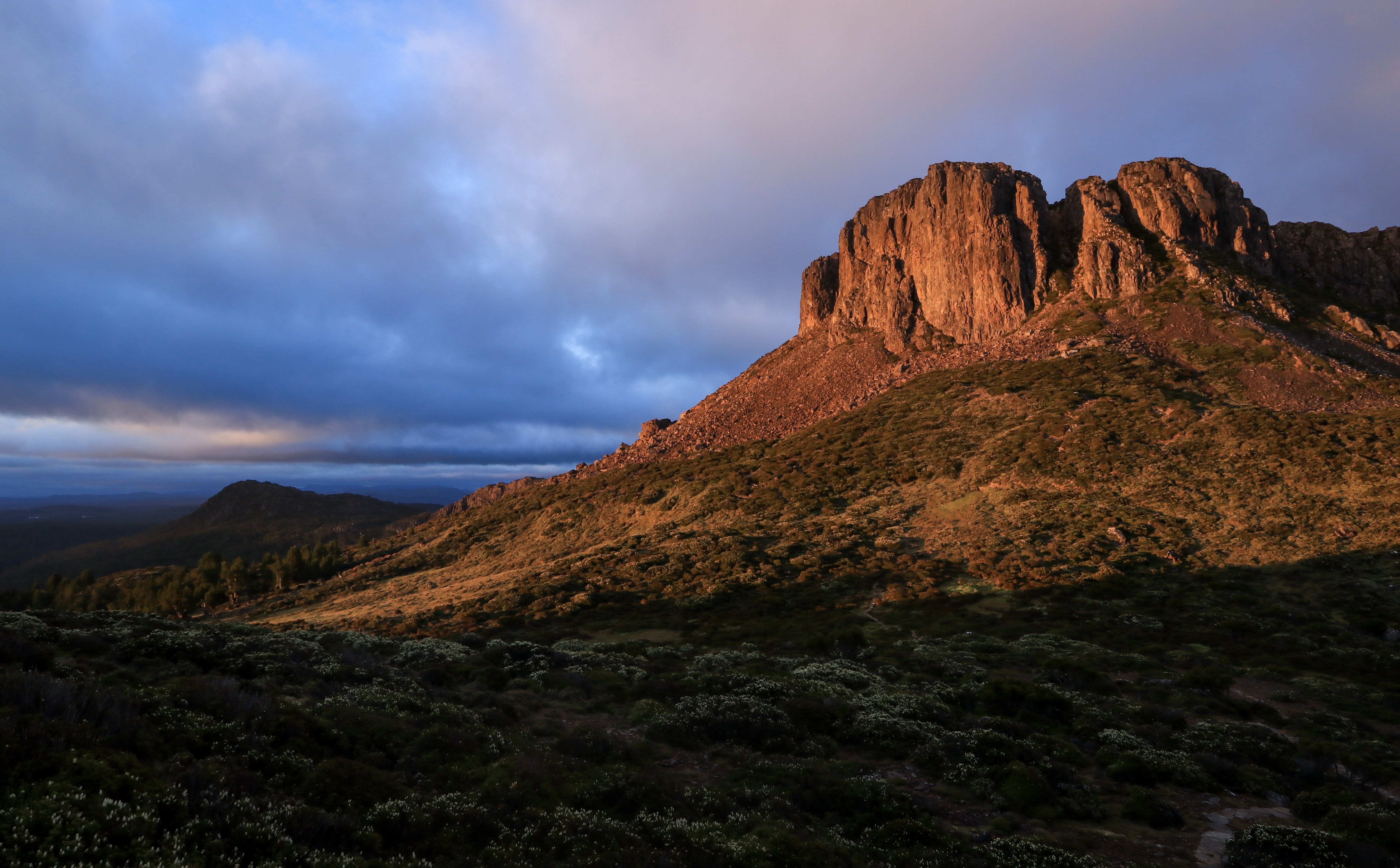
Most UNESCO World Heritage sites meet only one or two of the 10 criteria; the forest wilderness of lutruwita is the only place in the world that meets all four natural criteria, plus three cultural criteria, thanks to its rich First Nations heritage. People have lived in, used, managed and modified the forest landscapes of lutruwita for at least 35,000 years.
The Tasmanian Wilderness World Heritage Area consists of these protected areas and national parks:
Cradle Mountain–Lake St Clair National Park
In this year alone, 2023—40 years on from the people-powered High Court win that proved pivotal to save the Franklin—Wilderness Society is seeking World Heritage listing for the marine wilderness of the Great Australian Bight.
Together with local communities, Traditional Owners, our members, supporters and volunteers, and other environment organisations, we’ve protected K’gari/Fraser Island from sand mining, secured protection for half a million hectares of precious forests in lutruwita/Tasmania through the negotiated Tasmanian Forest Agreement, and stopped an industrial gas hub from being built off the coast at Walmadan/James Price Point.
Now, after the movement worked to successfully bring forward the planned exit from native forest logging by six years, we’re ramping up campaigning to ensure the Great Forest National Park and Emerald Link are created to provide a sanctuary for threatened wildlife like woller / Leadbeater’s Possum in eastern Victoria’s forests.
Since its formation in 1976 to save the Franklin River, with your support the Wilderness Society has gone on to successfully protect and advocate for the creation of protected areas, national parks and World Heritage, including:
Wollemi National Park, NSW: protected from three coal mines on the edge of the Greater Blue Mountains World Heritage Area
Munga-Thirri—Simpson Desert, SA: successfully advocated for the creation of Australia’s largest national park
Great Australian Bight, SA: we got multinational oil company—Norway's Equinor—to drop their plans to drill for oil in the Bight
Ningaloo Reef, WA: protected from huge resort development
James Price Point, WA: largest gas processing plant in history stopped
South-west forests, WA: over 350,000 hectares in national parks
Lalang-garrum Horizontal Falls Marine Park, WA: national park created to protect Horizontal Falls
Mitchell Plateau, WA: two of the world’s largest mining companies hand back their bauxite mining leases
Kakadu, NT: over 600,000 hectares in World Heritage area
Great Australian Bight, SA: BP backs out of plans to drill for oil in the Bight
Nullarbor, SA: 900,000 hectares protected in Nullabor Wilderness Protection Area
Marine Parks (Australia): Marine parks created right around the country
Arkaroola, SA: protected from uranium mining
Indigenous Wild River Rangers: 60 full-time Indigenous jobs
Shelburne Bay, QLD: the Wuthathi people of Cape York win their native title claim
Wenlock River, QLD: Steve Irwin Wildlife Reserve protected from bauxite mine
Cape York Peninsula, QLD: 1.5 million hectares of Aboriginal national parks and traditional lands
Daintree Rainforest, QLD: nearly 900,000 hectares in World Heritage Area
Land clearing laws (Australia): 20 million hectares protected in Queensland alone
Fraser Island, QLD: sand mining and logging halted
South-East forests, QLD: 425,000 hectares in reserves
NSW wilderness, NSW: over 1.2 million hectares in national parks
Williams River, NSW: saved from huge dam
River Red Gums, NSW and VIC: over 200,000 hectares in national parks
Otways, VIC: 150,000 hectares in Great Otways National Park
East Gippsland, VIC: 45,000 hectares in national park
Franklin River, TAS: saved from huge dam
Tasmanian Forests, TAS: nearly one million hectares in reserves and World Heritage Area
